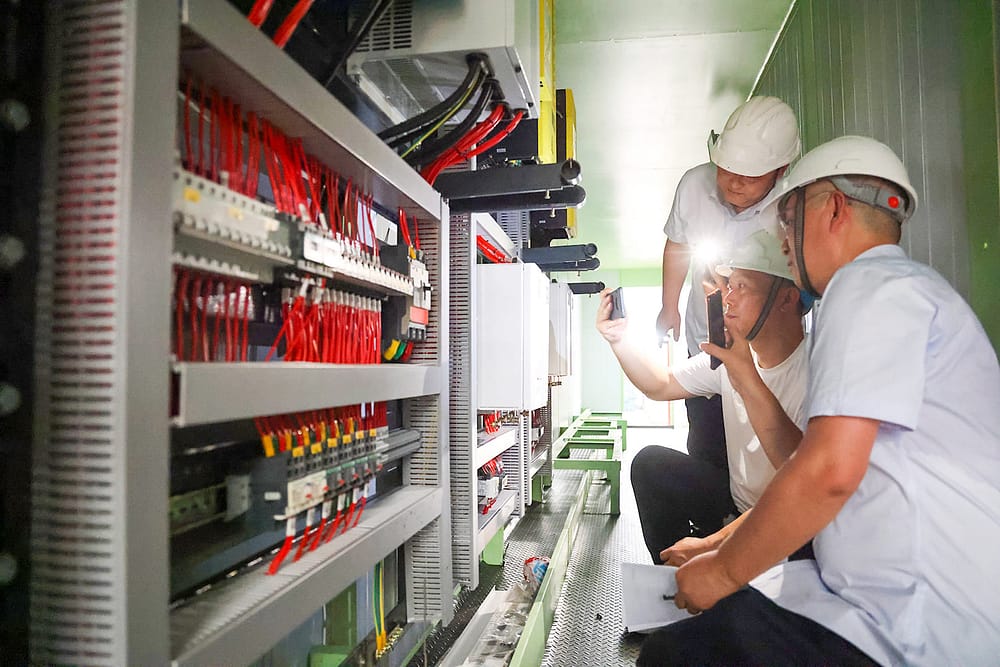Advanced electrical system troubleshooting services for complex applications.
Advanced electrical system troubleshooting services for complex applications.
Blog Article
Top Tips for Effective Electric System Troubleshooting
Fixing electric systems calls for a systematic approach, grounded in a comprehensive understanding of electrical principles and safety and security methods. The subtleties of effective repairing expand past plain technical knowledge; recognizing exactly how to document searchings for and prioritize security can substantially influence end results.
Understand the Fundamentals
Understanding the basics of electrical systems is necessary for efficient troubleshooting, as a solid foundation permits technicians to diagnose and deal with issues more successfully. A detailed grasp of electric concepts, such as voltage, existing, resistance, and power, is crucial in determining the origin of problems. Voltage is the electric potential distinction that drives existing with a circuit, while resistance opposes the flow of current, influencing the total capability of the system.
Experience with circuit parts, including resistors, capacitors, diodes, and switches, is additionally extremely important. Each component plays a distinctive role in circuit actions and can affect efficiency when malfunctioning. Additionally, comprehending series and identical circuit configurations is crucial, as these arrangements affect the distribution of voltage and present within the system.
Specialists must be aware of possible risks, such as shock and short circuits, to execute secure troubleshooting techniques. By grasping these foundational ideas, service technicians boost their capacity to carry out effective diagnostics and repair work, inevitably leading to improved performance and reliability of electric systems (electrical system troubleshooting).
Gather Necessary Equipment
Effective troubleshooting of electric systems requires the right set of tools to identify and fix concerns precisely. A fully equipped specialist can substantially improve efficiency and performance in recognizing problems. Crucial devices consist of a multimeter, which determines voltage, existing, and resistance, allowing for precise analyses of electric elements. Clamp meters are also useful for measuring present without detaching the circuit, ensuring safety and security and benefit.
In addition, insulated hand tools such as screwdrivers, pliers, and cord pole dancers are essential for securely adjusting electrical connections. It is additionally recommended to have a circuit tester accessible to validate the presence of voltage in electrical outlets and wires. For more complicated systems, a thermal imaging cam can aid discover overheating components, suggesting potential failings.

Follow a Methodical Technique
Having gathered the appropriate tools, the following action in repairing electric systems is to follow a systematic strategy. A systematic approach makes certain that technicians can identify mistakes effectively and precisely, reducing downtime and stopping unnecessary repair work.
Begin by assessing the system's schematic representations and specs. Recognizing the style and operational parameters will give context for detecting problems. Next, separate the trouble location by utilizing a process of elimination. This involves monitoring each element systematically, beginning with the power source and functioning in the direction of the tons.
Use testing tools, such as multimeters and oscilloscopes, to gather objective data concerning voltage, present, and resistance at various factors within the system. This empirical evidence will certainly direct your troubleshooting efforts and help to validate or get rid of potential reasons of failure.
Furthermore, consider environmental elements that might influence the system's efficiency, such as temperature level fluctuations or dampness ingress. A thorough assessment of electrical wiring, connections, and parts will certainly ensure that all opportunities are accounted for.
Record Your Findings
Comprehensive documents is important in the troubleshooting process of electric systems. Accurate documents improve the efficiency of determining persisting problems and facilitate communication amongst employee. Each finding ought to be diligently noted, including signs and symptoms observed, tests carried out, and the end results of those examinations. electrical system troubleshooting. This practice not only help in recognizing the source of the trouble yet likewise offers as a referral for future troubleshooting efforts.

In addition, maintaining a log of components replaced or repair work performed is very useful. This info supports supply monitoring and can aid assess the long life and reliability of details components.
Eventually, the documentation procedure ought to be comprehensive yet succinct, enabling very easy access and review - electrical Related Site system troubleshooting. By prioritizing detailed paperwork, specialists can develop a beneficial data base that not only aids in existing troubleshooting however also encourages future maintenance efforts, consequently enhancing overall system dependability

Prioritize Safety And Security Steps
Identifying the inherent dangers connected with electric systems is crucial for making sure safety throughout troubleshooting. Electric shock, burns, and equipment damage are just a few of the prospective risks that professionals encounter. Prioritizing precaution is not just a lawful commitment however likewise an ethical important that safeguards both the professional and the surrounding environment.
Before starting any troubleshooting job, technicians need to don suitable personal protective devices (PPE), including insulated gloves, safety glasses, and flame-resistant clothing. Guaranteeing that the workspace is completely dry and devoid of mess can dramatically reduce the risk of accidents. It is important to de-energize circuits prior to starting any kind of work, confirming that they are not live with the use of a multimeter read this post here or voltage tester.
Developing Learn More clear communication procedures with employee is likewise essential; this guarantees that everyone is conscious of prospective risks and the condition of the electrical system being worked with. Last but not least, having an emergency reaction plan in place can confirm invaluable in case of an occurrence. By focusing on precaution, service technicians can successfully alleviate dangers and foster a more secure work environment.
Conclusion
Reliable electric system fixing depends on a comprehensive understanding of basic principles and a systematic approach. By collecting vital tools, sticking to methodical analysis methods, and diligently documenting searchings for, the fixing procedure ends up being extra efficient and reputable. Focusing on precaution guarantees the health of individuals involved and the stability of the electrical system. Executing these approaches will boost the troubleshooting experience, causing quicker resolutions and improved operational effectiveness in electrical systems.
Report this page